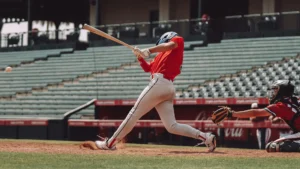Tennis elbow is an overuse injury of a couple of the common extensor tendons at the elbow. These are tendons that attach on the outside of the elbow and travel down the back of the forearm, giving wrist and finger extension function with gripping, lifting, and reaching type activities.
When it comes to tendon injuries, instead of the body healing itself with normal tendon tissue, it heals with scar tissue.
Instead of healing with normal tendon tissue, the body heals it with scar tissue which has different mechanical properties. This scar tissue can lead to experiencing weakness and pain with repetitive activities or lifting activities.
I have patients who come in experiencing pain with simple things like combing their hair, blow-drying their hair, picking up a bag, or starting the car.
If there are simple activities that you wouldn’t think would cause any pain but are, you may be suffering from tennis elbow.
Tennis elbow pain is experienced on the outside of the elbow. There is an anatomic landmark called the lateral epicondyle, which is a bony point on the outside part of the elbow. The pain will radiate down the back of the forearm.
Tennis elbow is typically caused by a lot of repetitive activities that require the same motion over and over again. Many of the routine activities that you wouldn’t necessarily tie to creating an injury can create this problem over time.
Sometimes, tennis elbow can be occupation related.
If you’re doing a lot of repetitive lifting or a lot of grip type activities in your job, it can lead to tennis elbow. In my practice, I tend to see many construction workers who have used power tools regularly for a long time.
But very rarely do I see patients who have tennis elbow who actually play tennis!
About 90-95% of tennis elbow cases can potentially resolve on their own.
Patients will often learn by their own experience which activities are causing or increasing the pain and modify their activities, giving the situation a chance to resolve itself.
From a conservative treatment standpoint, doing things like taking anti-inflammatories, physical therapy, and activity modification can lead to tennis elbow healing on its own.
The main kind of pathologic process that needs to be addressed resides within a tendon called the extensor carpi radialis brevis, or the ECRB.
The surgical approach releases that tendon origin, debrides the bad tissue, and gets rid of that bad tendon tissue so that the problem can resolve.
Now there are multiples ways that an orthopedic surgeon can achieve that.
Elbow Arthroscopy
Some surgeons prefer to perform an arthroscopy of the elbow joint, release that origin of the ECRB from inside the joint, and surgically address the problem that way.
Open Surgery
Some surgeons prefer an open technique where the ECRB tendon origin is debrided and taken down off of that bony prominence on the outside part of the elbow. Next, they create a bleeding bed and repair the tendon back down to incorporate good healing.
Newer Technologies
Then there are some newer technologies such as Tenex. The idea is under ultrasound guidance, you break up and remove the damaged tissue with a large-bore needle.
Recovery is defined in different ways. Everything from how soon can I return to work versus how fast can I go back to playing sports or doing recreational activities.
In general terms, the skin incisions take a couple of weeks to heal.
I don’t believe in prolonged immobilization when treating tennis elbow. I encourage early range of motion so that we can try to limit the amount of stiffness that will occur in the elbow due to that immobilization.
There is a rehab protocol with physical therapy that patients will go through. Typically I let people start doing light lifting activities at about six weeks and return them to full lifting activities by 12 weeks.
The answer is yes, tennis elbow can come back after surgery, but it’s certainly not likely.
The vast majority of patients who have surgery for tennis elbow have a good outcome and don’t have a recurrence of their symptoms.





